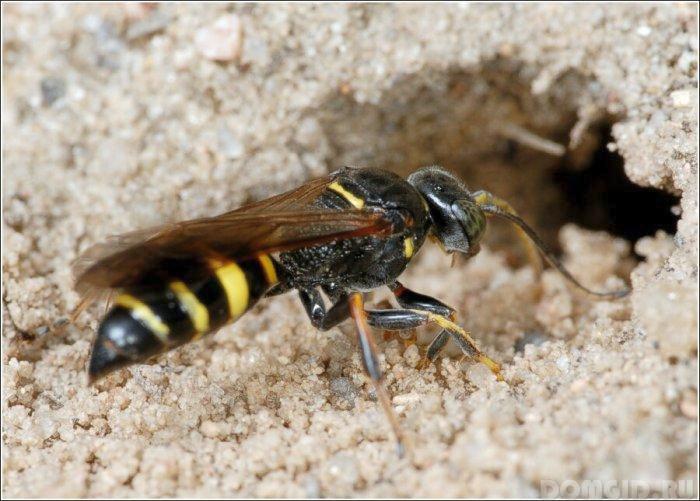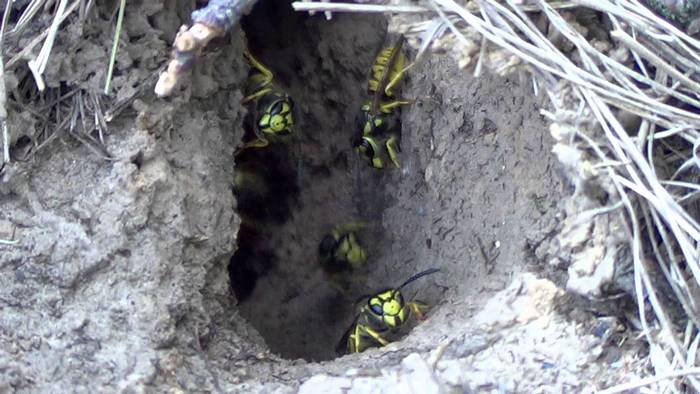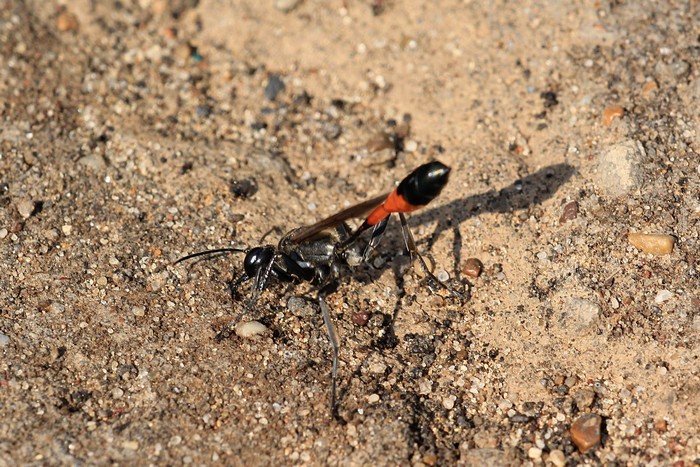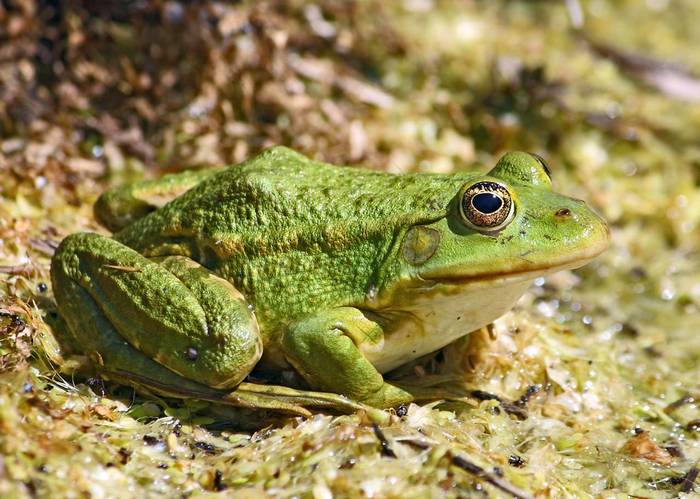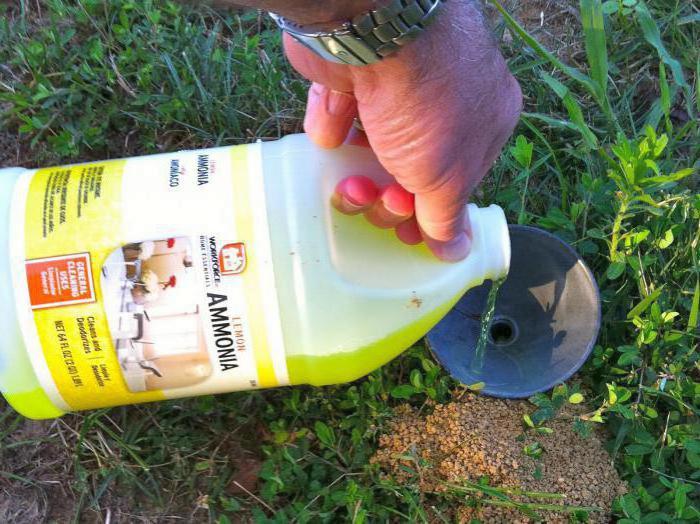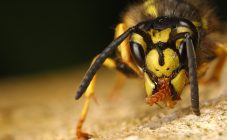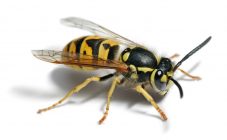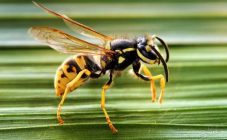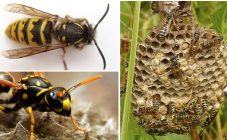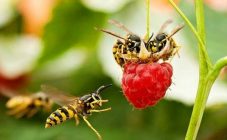Content:
Biologically speaking, there is no such species as ground wasps. All representatives of the family of real wasps that live in the earth are united under this popular name.
At the same time, wasps in the ground can live both alone and in flocks. These include not only burrowing or sandy wasps (aka crabronids) that build nests in the soil, but also paper wasps if they locate their combs underground. The main difference is that for crabronids, a nest in the soil is the norm, while for paper wasps such an arrangement of dwellings is rather an exception caused by non-standard circumstances than a rule. Wasps are sometimes mistakenly called earthen bees.
Thus, the question whether wasps live in the ground can be answered in the affirmative.
In general, in addition to the non-standard habitat, the shrew wasps practically do not differ from their terrestrial relatives. The paws may have small bristles for digging holes.
In everyday life, these insects are useful for those who need to get rid of many pests. In addition, they can live with several families next to each other.
What does a hornets nest look like?
While it is quite easy to identify a ground hornet's nest, it is not so easy to understand what an ground hornet's nest looks like. By and large, wasp dwellings located in the soil are similar in structure to terrestrial ones. Its appearance depends on several factors - for example, what kind of insects built the dwelling, as well as on the chosen location. As a rule, a hornet's nest in the ground is able to accommodate a queen with her brood, despite its external compactness.
An underground nest can be built:
- in an abandoned burrow of a wild animal;
- in the underground part of the anthill;
- under the roots of trees.
In addition, a number of wasps are able to independently dig their nests in loose soil.
Nests are built mainly by schooling individuals, single individuals, as a rule, are limited to burrowing into the ground. The place for the nest is chosen by the uterus in the spring, and the second time in one place the swarm settles extremely rarely. The type of dwellings depends on the habits of a particular type - for example, paper wasps build dwellings from the bark processed by their saliva, as a result of which the material becomes similar to gray-yellow paper.
Thus, a wasp nest in the ground can be made of almost any material and be located not only in the garden area, but also on the forest edge or in urban conditions.
Who are the ground hornets
Since hornets are a subspecies of true wasps, they can also be classified as land wasps. Unlike the "ground" hornet, the earth hornet is often aggressive - in fact, this is their main difference.
Black earthen wasp
Black wasps are a bit like hornets in size. They belong to the genus of road wasps and are the largest representatives of this insect family. The name indicates the color - they are characterized by black, or purple with the addition of blue body color.
Black insects are dangerous because of the large amount of poison and a large sting, due to which their bites are very painful and dangerous for people with allergies. Due to the high level of aggression, they can be attributed to the most dangerous species.
Unlike most species, black wasps prefer to settle in the ground, so they can rightfully be called earthen wasps.
Another feature is reproduction. Due to the fact that their dwellings are located on the ground, it becomes easier for such insects to get their prey in the form of spiders and other insects, therefore they lay eggs directly in the paralyzed prey, thereby providing the larvae with the opportunity to fully mature and begin to develop.
Who ravages hornets' nests in the ground
Nests in the ground can be devastated by larger animals or birds, as well as some amphibians (although the latter prefer solitary individuals). Those who eat earth wasps include:
- badgers;
- brown bears;
- wasp eaters;
- rats;
- affection;
- frogs.
Of course, this list is far from complete. In general, the likelihood of ruining a nest is largely related to its size - so, only large animals that are not afraid of bites are suitable for a large dwelling, and most of the inhabitants of the forest will be able to destroy smaller or single settlements.
Why are earth wasps dangerous, what is worth fearing
When colliding with earth wasps, there are two things to be wary of:
- their aggressiveness;
- a possible allergic reaction to their bites.
In addition, since the nests are located in the ground, there is a non-zero probability of stumbling upon one of them at the most inopportune time - for example, while working in a summer cottage, and being attacked by a swarm. In general, while common wasps can be found in an urban environment, earth wasps are more often found in a country house, in a village, or in a forest - that is, in an environment close to nature.
If we are talking about a lone insect, then its danger is minimal.
Therefore, if it becomes necessary to destroy earthen nests, it is better to first take care of a full protective suit and remember the basic precautions:
- It is better to destroy wasp nests in the dark and in cool weather, best of all in autumn.
- If possible, do not make sudden movements and remain silent.
In order to destroy ground wasps, you can use a wide variety of insecticides, but due to the aggressiveness of these insects, it is better to choose instant drugs.
In addition to using insecticides, setting fire to the nest is considered effective. Before burning a wasp dwelling, it is necessary to check for any flammable substances or objects nearby and prepare water or sand for extinguishing in advance. In addition, before starting the ignition, it is worth not only removing all unnecessary and fire hazardous away, but also immediately limiting the possible spread of fire by making a loose circle around the place of ignition.
The aggressiveness of ground wasps is one of the most important factors that must be taken into account when interacting with them - despite the fact that they do not differ biologically from ordinary insects of this family.
